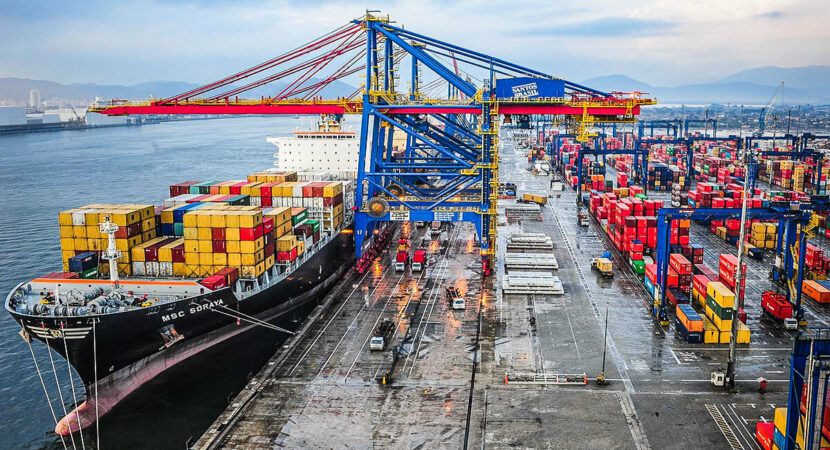
Agribusiness increases cargo handling at the port terminal in Santos, breaking monthly and half-yearly records. Soybeans in grains stood out as the largest volume cargo, reaching around 21,6 million tons in the semester.
This past Thursday (28/07), it was announced that the Port of Santos has once again set records for cargo handling for agribusiness. In the first half of 2022, the port terminal reached the best historical mark for the period, 80,7 million tons, a significant increase compared to the same period last year, for example.
Agribusiness cargoes are the main reasons for the increased handling at the Port of Santos
Agribusiness is the main reason for the increase in cargo handling at the Santos port terminal, causing the port to break monthly and half-yearly records this year. In this first half of 2022, the port had an increase of 5,7% over the same period last year, considering only the month of June, there were 14,1 million tons, motivated by agribusiness, a growth of 6,7% compared to the same month of the previous year.
Agribusiness loads continue to lead this handling performance. Thus, in the first half, soy compound shipments (+10,9%), with 26,1 million tons; corn (+184,1%), with 1,8 million tons, and cellulose (+60,4%), with 3,9 million tons, and fertilizer discharges (+23,1%), with 4,1 .41 million tons, were the highlights, for example. In addition, shipments of meat (+1,2%), with 1,4 million tons, fuel oil with 1,2 million tons, citrus juices also with 1 million and sulfur discharges with XNUMX million, also stood out .
However, the highlights of the month of June were soybeans, with 3,5 million tons, an increase of 21,3%, cellulose also secured its prominent place with an increase of around 46% and corn with 325 thousand tons, increasing the beginning of the sale of this grain crop, also stood out.
The large movement of the Santos port terminal also increased the Brazilian GDP
With the gigantic movement caused by agribusiness in the port of Santos, one of the beneficiaries was the Brazilian GDP, which grew by an average of 1,1% per year, with the annual growth of tonnage and the rate of containers at the port terminal. In addition, fertilizers topped the import cargo ranking, growing 21,5% and totaling 8 million tons.
Thus, the port operations director, Marcelo Ribeiro, warns of the need for new infrastructure for container operations: “Our current capacity is 5,3 million TEU. SPA, the National Waterway Transport Agency (Antaq) and the Ministry of Infrastructure (Minfra) are already preparing the auction for a new area for container operation, STS 10, which should take place in the second half of this year. The STS 53 is crucial for Santos to provide adequate infrastructure for the demand for this cargo. Today we are not able to fully supply the volume of fertilizer in our area of influence, due to lack of installed capacity”.
In addition, a total of 4.856 ships docked at the Santos terminal last year. These numbers were 1,0% below 2020. The decrease in the number of ships together with the increase in handling characterizes the arrival of larger ships to Santos, which allow for greater operational performance and increased productivity.











